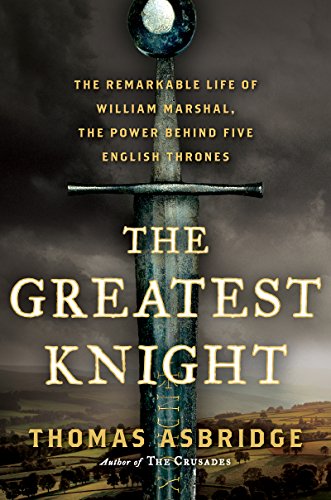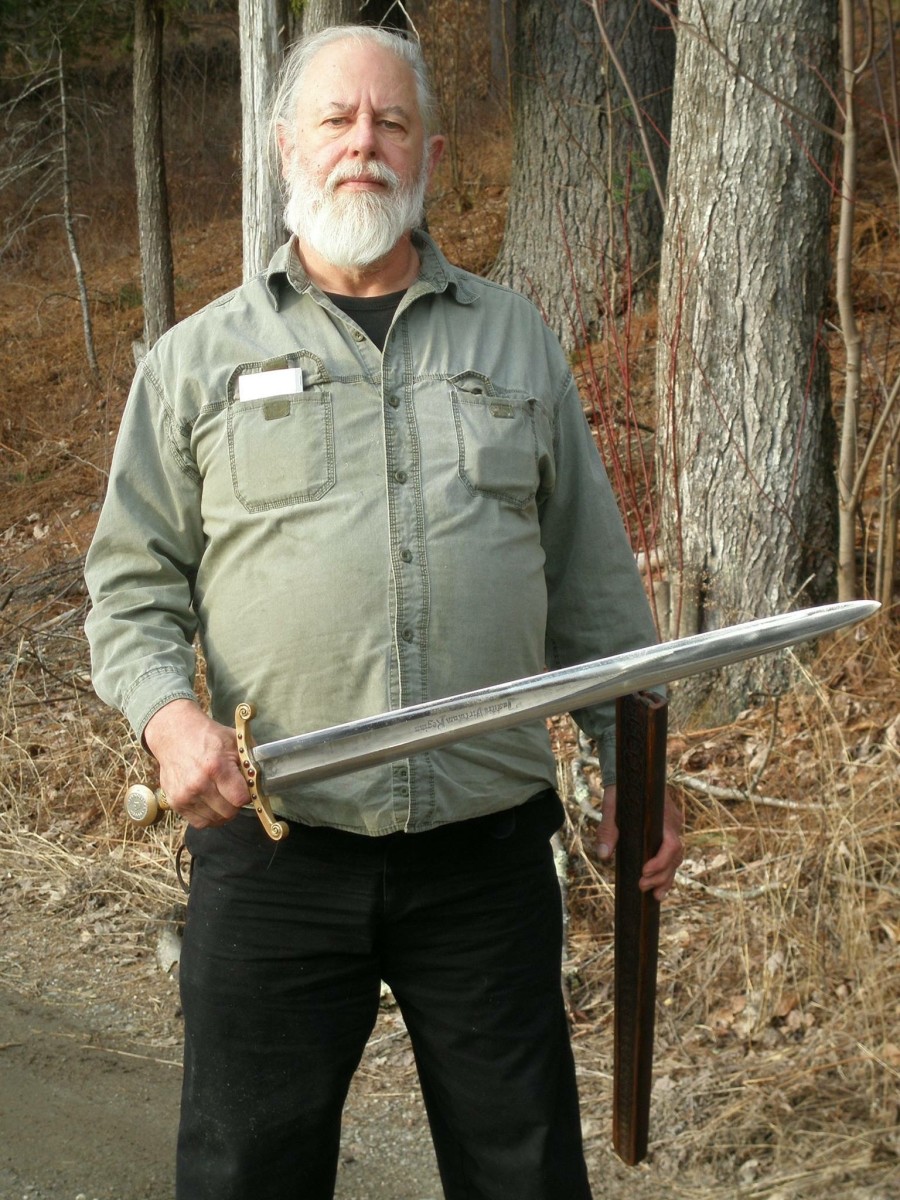I joined the SCA when I was 18. I am in the home stretch to 50 now. So have been fighting for over 30 years. I think I was knighted about 8 years in. Probably could have happened sooner but the editor between my brain and mouth was not as good back then. And, I am sure, some people were just jealous about how handsome I was.
Well, that couldn’t have been true, so better editing is what I will go with.
I consider myself to be a pretty solid knight. Never won a Crown but I have lived and travelled all over the place and I have always given a good account of myself. I try and follow the spirit of the people that taught me and teach anyone who asks. I guess that includes sharing some stories and advice here.
I expect that I will write a lot about the SCA on the blog. It stands for the Society for Creative Anachronism. You can find out the basic information at http://www.sca.org . It is very hard to explain exactly what the club is because it is different for each person in it, but the basics are it is a Middle Ages recreation club. Not quite like the Civil War reenactors because it is very rare that even the theme or the start of a battle is the same as a historical one, but some members of the SCA are as serious about every little detail of the clothes they wear as anyone in any other history group.
For me, the heart of the SCA is that it allowed me to become a knight. My main love is armored fighting. Armored meaning wearing armor and fighting with swords and other medieval weapons. The weapons are made of rattan (a type of wood that is slightly flexible and breaks in a much safer fashion than other types of wood) and the combat is full force and blows are hard enough to dent steel (well at least 16 gauge steel, and maybe 14 gauge. 12 gauge is pretty safe.). The fights are real in that they are not choreographed or decided in advance and it is not just a touch kill system like modern fencing. There still is a certain amount of “counting coup” in the fighting as a hard blow to the head or torso kills your opponent and it is highly unlikely that one such blow on an armored opponent would have actually killed them but the rules do work well enough.
So here is the start of some stories and advice and I will slowly add my thoughts into this blog and may not stick to Thursdays for hobbies only and might post further SCA items on other days.
The first question I get asked quite often by people just starting is how do you learn to fight and get good? I can assure you that I was no athletic standout. I played only house league hockey and baseball growing up and am to this day not the most balanced and smooth fighter out there.
There is a pretty simple answer to that question. You need to actually fight to get good and the sooner you start and the more you do the better you will get.
My personal example is this. I found the SCA in Montreal at a war gaming tournament I was running in my CEGEP days. I was 16 and 17 in CEGEP (community college) so I am not 100% sure how I am stuck on me joining when I was 18, but I guess it is because it was the summer between CEGEP and university that fought for the first time.
My qualification bout was my very first fight ever. I had joined the SCA and managed to get my hands on the known world handbook and the basic armor standards, I had found a place in Montreal that sold rattan and bought enough for a sword. The recommendation then was to split a piece in half and use it, with a little carving, to make a cross guard. So I did that. I did not carve the hand grip.
I made a heater shield out of plywood and attached leather straps to it using some soft leather I had. I made carpet armor and modified hockey equipment to protect my shoulders, elbows and knees. I used hockey gloves to protect my hands. I had no helmet and there might have been one in the entire shire. I walked around in my backyard holding my shield and tried to imagine what actual fighting would be. I hit the tree in my front yard turning it into a pell and tried to swing like the “snap” was described. I did this for weeks, every day, getting ready for the very first event I was going to. Master Tearlach was coming and he was going to run qualification bouts.
I went to the event and borrowed a loaner helm that Master Tearlach has made. I think it was an army helm with sides riveted to it. Tearlach was a big and pretty scary guy to me, but I have always been able,to overcome that. I squared off for my qualification bout. The very first blow on my shield snapped both straps. I had not known that I would,need much stronger leather for straps. No one had hit me before. Tearlach leant me a shield (and that was the fateful day I started using a Tearlach coffin kite) and I went right back out there. I fought. I swung. I blocked. I took the blows that hit me. I was deemed safe and qualified.
After my qualification bout, Tearlach asked for my sword. With one grip he realized that I had not carved the grip. He didn’t say a thing, he just took a knife, carved it really quickly, and handed the sword back to me.
I fought as much as I could that afternoon, basically whenever I could borrow the helm.
Since then I have fought and fought and fought. Practice, tournaments, wars. Pell work. Sometimes still walking around and imagining it. Hours and hours and hours of pell work. Doing it. Fighting. Not talk about it, not posting on the internet about it, not trying to make the perfect armor before doing it. Crappy carpet armor. Cuirbolli and plastic body armor that I made myself (pretty bad looking but protective). Ugly white helm with Templar red crosses which changed to blue after my first Pennsic friendly fire experience.
The love of battle filing my heart, my blood on fire with the glory and exchange of blows. Dropping into the Void and striking my opponent dead from the heart of emptiness.
So my answer to that question is get your ass out there and fight. Borrow armor. Travel. Make it to tournaments and wars. Be the first in armor and the last out of armor. Never stop. Fighting makes you good. Teachers help and the right form makes improvement faster but fight.
Another question I get often from beginners is now do you hold a sword. To that question, I rely on Miyamoto Musashi.
From The Book of Five Rings, The Scroll of Water
“The Way of Gripping the Sword
You should grip the sword holding the thumb and index finger as though they were floating, the middle finger neither tight nor slack, the ring and little fingers very tight. It is bad to have an empty space inside your hand. Hold the sword with the thought of slashing your opponent. When you slash your opponent, the posture of the hand remains the same, and your hands must not tense up. It is with the sense of just slightly moving your thumb and index finger that you beat back your opponent’s sword, that you receive it, strike it, or exert pressure on it. In all these cases, you should grip the sword with the thought of slashing. Whether you are training at slashing an object or in the thick of combat, the way of holding the sword remains the same—it is held with the intent of slashing your opponent. In sum, it is not good to let the hand or the sword become fixed or frozen. A fixed hand is a dead hand; a hand that does not become fixed is alive. It is necessary to master this well.”
I often go back to The Book of Five Rings and it is my personal inspiration on how to be both a better swordsman and a better person. Musashi is brilliant at describing how to fight and his advice translates very well to SCA fighting.
I also can say that I sometimes shift my grip and hold tighter with my index and ring finger and get the whip and direction change from tightening my bottom fingers, but I much prefer the ring and little finger as my anchor fingers just like Musashi recommends.
The Book of Five Rings is very good and I recommend that any SCA fighter read it. Constantly repeated in it is the advice to do what is written. To practice. To fight. Or in another way, learn how to win.
“The Principle of Combat
In strategy it is by the principle of combat155 that you will know victory with the sword. I do not have to write about the details. The important thing is to train well and learn how to win. This has to do with sword techniques that express the true way of strategy. The rest must be transmitted orally.”
My final topic for this week is on speed in SCA fighting. Many beginners think that speed is really important. They get hit by a blow from an experienced fighter and they think it is all because of speed. Actually, in my experience, it is not raw speed that is the most important but timing and rhythm. Time a shot to match the rhythm of how they move is more important than raw speed that ends up right at someone’s shield.
Again, Musashi says it better than I can.
“ Speed is not part of the true way of strategy. When you say “fast,” this means a lag has occurred in relation to the cadence of things; that is what is meant by “fast” or “slow.” In whatever the domain, the movements of a good, accomplished practitioner do not appear fast. For example, there are messengers who cover forty or fifty leagues at the run in a single day, but they do not run fast from morning till night. Whereas, a beginner cannot cover such a long distance, even if he has the wind to run the whole day.
In Noh theater, when a beginner sings following a good, accomplished practitioner,276 he has the impression of lagging behind and sings with the feeling of haste. In the same way, in the drumbeat for “Old Pine” (“Oimatsu”),which is a slow melody, a beginner has the feeling of lagging behind and having to catch up. “Takasago” is a rather fast song, but it is not appropriate to play the drum too fast. Speed is the beginning of a fall, because it produces a deviation in the cadence. Of course, excessive slowness is also bad. The movements of a good, accomplished practitioner look slow, but there is no dead space between his movements. Whatever the domain, the movements of an expert never appear hurried. Through these examples, you should understand a principle of the way.
In the way of strategy, it is bad to try for speed. I will explain. In places such as a marsh or deep rice paddy, you cannot move either your body or your legs fast. This is all the more true for the sword—you must not try to cut with speed. If you try to cut with a fast movement, the sword—which is neither a fan nor a knife—will not cut because of the speed. You must understand that well. In group strategy also, it is bad to think of hurrying up in order to attain speed. If you possess the attitude of mind of “holding down on the headrest,” you will never be late. If your adversaries act too fast, you apply the opposite approach, you calm yourself and avoid imitating them. You must train yourself well in developing this state of mind.”
Speed is nice but relying on speed and thinking that speed is the way to victory will lose you way more fights than you think it well. Be fast enough, not the fastest.
The Book of Five Rings quotes are from a translation called The Complete Book of Five Rings and it can easily be found via online booksellers. There are other translations and most are good enough. I highly suggest you buy and read the book.
Website with an online, free copy of The Book of Five Rings
The Book of Five Rings
Books, either in paper or on Kindle (all links go to Amazon.com)
The version I quote here:
The Complete Book of Five Rings
The Complete Book of Five Rings – Kindle version
The translation I first read
A Book of Five Rings: The Classic Guide to Strategy
A Book of Five Rings: The Classic Guide to Strategy – Kindle Version
An account of Musashi’s life
The Lone Samuari: The Life of Miyamoto Musashi
Fictionalized versions of Musashi’s life
Musashi
Musashi – Kindle version
Samurai Trilogy [blue-ray]




